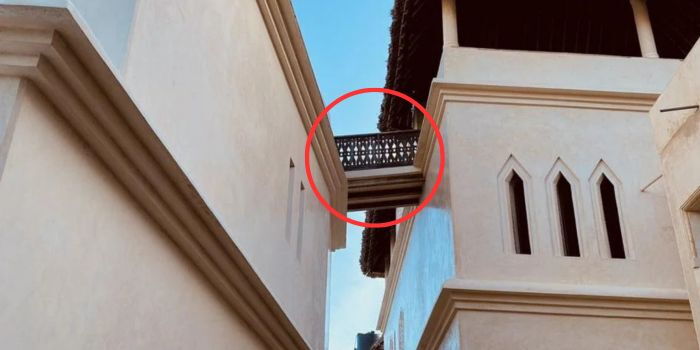In the idyllic coastal Island of Lamu, Kenya, many traditions are easy to spot like the clear absence of cars on the island with donkeys serving as the major form of transportation.
However, nestled between the narrow streets and easy to miss is the intricate nature of the Swahili architecture that dates back as far as the 18th century.
One of the most anomalous of these building traditions is the connecting balconies between two supposedly different storey buildings.
Known as wikio, they are bridges that connect big families and clans to allow for easier movements between the houses without having to cross the street or needing extra exits.
An image of two Lamu homes connected with a wikio bridge.
They span the streets and often run through the entire length or width of the houses which are more often than not storeyed.
Found exclusively in the upper part of the town, the traditional stone houses tell a story of a different Kenya boasting of residents previously owned by wealthy merchants and noble Arab families during the colonial era.
They range from single-storey buildings to massive mansions with some still housing the descendants of the former regime.
With ceiling heights ranging between 3.5 to 5.5 metres, second or more storeys where the bridges were connected were often built after the ground floors were long settled in.
Surprisingly, they viewed windows as unnecessary and as an infringement of their privacy and therefore were only added to the top floors.
The Kiwanda or the indoor courtyard, therefore, had to serve as the source of most of the building’s light and air and most daytime activities were often focussed there.
Without this need for external openings, groups of houses were, therefore, often attached and shared common walls without losing light or privacy.
These houses can still be found exclusively in the Mkomani area, albeit newer and more modern without losing sight of the traditional Swahili architecture. They still make use of Wikio bridges to easily visit with extended families.
However, it is a tradition that has also been taken up by Western countries as well, both to bolster real estate and also as a functional necessity.
A photo collage of houses built with a connecting bridge in the United States of America.
Photo


